Fiji is well known for its shark diving tourism and boasts a considerable number of species of these amazing creatures. Visitors from around the world travel for thousands of miles to experience the incredible spectacle of sharks swarming around them. Bull sharks are a highlight with Tawney Nurse sharks, White and Black Tip Reefs, Grey Reefs, Silver Tips, Sickle Fin Lemon sharks and the occasional Tiger appearing at the baited dives – Kathryn and I will have blogs to share on this next week. Time is steadily running out for this kind of encounter though as fishing decimates their populations worldwide.
Discovering the whereabouts of shark nurseries is an important part of developing strategies to conserve the various species of sharks found in any waters – even more so if the species returns to the same area year after year. Here in Fiji, Projects Abroad and USP (The University of the South Pacific) work together to tag sharks in river mouths to establish where some species might be giving birth. The current focus is on Scalloped Hammerheads (classified as endangered) and it seems that the Rewa River just East of Fiji’s capitol city Suva is going to be an important area of focus in the coming years.
Various study sites are marked and each week groups set out for four hours to capture, record and tag any sharks at their chosen sites. A 100m long net is placed across the current and extends approximately 2.5m up from the bottom. The survey boat checks along the length of the net every 20 minutes, cuts free any fish caught while sharks and other key species are kept on board for as short a time as possible to gather the study data. The sharks are checked for a previous tag using a handheld receiver and a tag is injected under the skin jut to the right of the dorsal fin if no previous tag is found. The shark is sexed, weighed, measured and if it’s the first time it’s been caught, a DNA sample is taken from the pelvic fins.
- Shark tagging
The sharks caught in the surveys are tiny from approximately 80cm down to half that! The trip started well enough for the time of year with 1 new shark on the first net check and 1 new and 1 previously tagged shark on the second check. Unfortunately our evening came to an unscheduled end after 45 mins as a boat problem forced an early return to harbour (also the reason I have so few photos from the trip!). While this means the data on shark numbers at the site from this days work cannot be used in the study, the tagging and DNA are still useful to track these sharks in the future.
If you’re interested in taking part in this research, have a look at what Projects Abroad offer in Fiji.

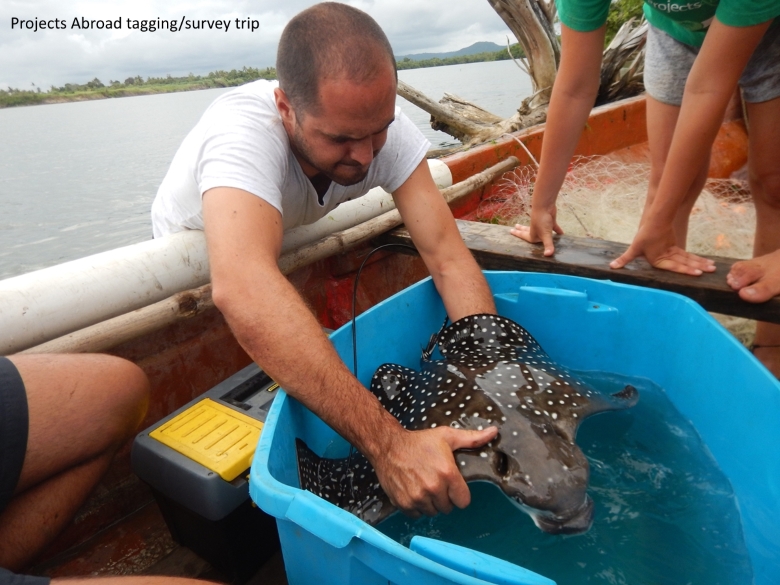
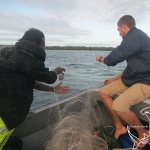
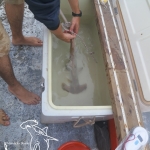
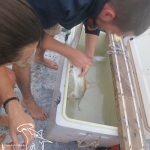
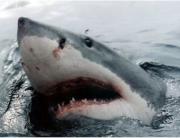
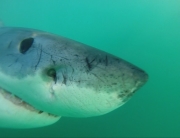
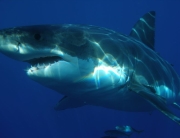
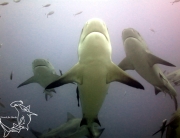
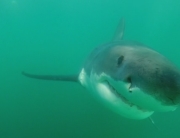










I will belong to this fantastic activities!!
I look forward to join this project!!!